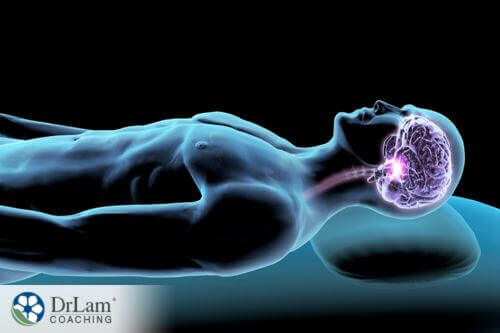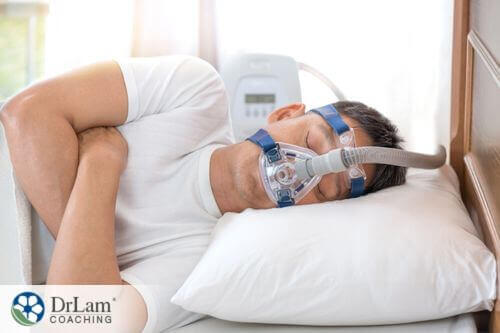 According to the CDC, one in three adults in the United States doesn’t get enough sleep regularly. There are multiple reasons for this; perhaps the most serious is a sleep disorder. If your healthcare provider suspects you have a sleep disorder, you may need a sleep study to evaluate the condition properly.
According to the CDC, one in three adults in the United States doesn’t get enough sleep regularly. There are multiple reasons for this; perhaps the most serious is a sleep disorder. If your healthcare provider suspects you have a sleep disorder, you may need a sleep study to evaluate the condition properly.
This article will walk you through the process of doing a sleep study, the types of these studies, and other relevant information to know about getting one.
A sleep study or sleep test is a comprehensive, non-invasive test that records specific patterns and body functions during sleep. These functions include breathing rate, blood oxygen level, heart rate, leg movements, eye movements, and brain waves.
From the sleep test results, sleep experts can determine if you have a sleep disorder as well as the type of sleep disorder you may have. This will go a long way in mapping out a remedy and management therapy for the condition.
A sleep test is usually done at night and in a sleep facility, allowing for expert monitoring during sleep. However, it is also possible to have the test during the day to accommodate people who work at night.
As helpful as a sleep study is in identifying issues with sleep, not everyone with suboptimal sleep necessarily needs one. The most significant indication for a sleep study is if your healthcare provider thinks you have a sleep disorder.
There are more than 100 identified sleep disorders, but the usual suspects in a sleep study are:
Insomnia is the most common specific sleep disorder in the United States. This is a condition where people find it difficult to fall asleep or stay asleep throughout the night. This condition may be acute or chronic.
This sleep disorder causes a person to repeatedly stop breathing during sleep. In one night, people with sleep apnea may have over 150 episodes. Sleep apnea may be obstructive or central.
Also known as RLS, this condition causes an uncomfortable and intense urge to move the legs while trying to fall asleep. People with this condition often have to walk around or shake their legs before sleeping.
People with this neurologic condition experience extreme daytime sleepiness and typically fall asleep uncontrollably during the day. Narcolepsy is a result of the brain’s inability to regulate the sleep-wake cycle.
Aside from evaluating sleep disorders, you may also need a sleep test to monitor the progress of a particular sleep management plan. This will help your healthcare provider determine the next course of action in resolving your sleep issues.
There are many pointers to a potential sleep disorder. They include:
If you experience any of these symptoms, you should seek medical help immediately. Note that you need to see your healthcare provider before going for a sleep study.
 The brain is the organ primarily concerned with regulating sleep, requiring the collective effort of multiple hormones and neurotransmitters to determine sleep and wakefulness times. Sleep disorders may arise if there are disruptions in the normal functioning of the brain due to a dysregulation of the body’s NeuroEndoMetabolic (NEM) Stress Response.
The brain is the organ primarily concerned with regulating sleep, requiring the collective effort of multiple hormones and neurotransmitters to determine sleep and wakefulness times. Sleep disorders may arise if there are disruptions in the normal functioning of the brain due to a dysregulation of the body’s NeuroEndoMetabolic (NEM) Stress Response.
The NEM system is the body’s built-in stress-coping mechanism, consisting of six circuits of organs and systems. The brain is a major component of one of these circuits, namely the Neuroaffect circuit. This is why any stress-induced issues with this circuit may affect brain-controlled processes, like sleep.
Aside from stress, other factors that can cause and contribute to sleep disorders are:
There are different types of sleep studies, and your symptoms inform the decision of which sleep study you get. These studies fall under two broad categories, depending on where you get the sleep study. We will consider them below.
An in-lab study is a sleep test carried out in a sleep facility. This facility allows sleep experts and technicians to monitor you with advanced tools during your sleep study. The types of sleep studies carried out in a sleep facility are outlined below.
This is the most typical in-lab sleep study that health providers recommend. This test monitors the sleep patterns and cycles of an individual overnight. The result of polysomnography is a polysomnogram, and it usually contains data about brain activity, breathing and heart rate, blood oxygen level, snoring, and muscle activity.
This test can help experts determine various sleep conditions, including sleep apnea, abnormal movements and behaviors during sleep, restless leg syndrome, circadian rhythm sleep-wake disorders, and more.
Polysomnography is done in rooms designed to induce sleep. This implies that the rooms are quiet and dimly lit, with comfortable beds and a restroom. Often, there’s a TV and magazines in the room, but you can bring other things along that you believe will help you fall asleep.
There are cameras installed in the room, allowing a technician to monitor you during sleep. The technician will also be able to communicate with you during the test. After the study, you can leave early in the morning to get some more sleep at your home.
This test usually comes two hours after an overnight sleep study, and it measures how quickly an individual falls asleep during the day. It typically consists of five scheduled naps, with each nap lasting about 15 minutes. The test will involve sensors on various points of the individual’s face to determine when the patient enters REM sleep.
Healthcare providers often recommend MSLT to determine if someone has narcolepsy or idiopathic hypersomnia.
A CPAP titration in-lab sleep study determines the amount of air pressure someone needs to prevent upper airway blockage during sleep. This overnight sleep study measures parameters like heart and breathing rate, blood oxygen levels, limb movement, and brain waves.
 The results of a CPAP titration help doctors evaluate sleep breathing disorders like sleep apnea and hypoventilation. Additionally, this study helps patients program their sleep devices to the best pressure setting for better sleep.
The results of a CPAP titration help doctors evaluate sleep breathing disorders like sleep apnea and hypoventilation. Additionally, this study helps patients program their sleep devices to the best pressure setting for better sleep.
If the initial resolutions and determined parameters after a CPAP titration prove to be inaccurate in managing the sleep breathing disorders, a second study may follow.
This study is so called because it combines two other sleep studies – polysomnography and CPAP titration. The sleep study is split into two parts, with polysomnography first monitoring relevant sleep apnea parameters. The second part of the study is used for CPAP titration, allowing technicians to assess sleep breathing disorders.
This study is primarily reserved for people who cannot afford to have two overnight sleep studies. Each of the studies in the split night study takes around three hours.
Healthcare providers are becoming increasingly comfortable recommending home sleep tests for their patients because of the level of sleep monitoring devices available. Some sleep studies don’t require patients to visit a sleep facility.
Although the data from a home sleep test is less comprehensive than an in-lab study, sleep experts can modify the in-home study to record just the relevant data or the patient’s condition. These home sleep devices usually monitor blood oxygen levels, heart and breathing rate, airflow, and snoring.
HSAT is often the go-to method if the healthcare provider suspects moderate to severe obstructive sleep apnea. There is no need for monitoring from technologists during this study because the home test is sufficiently easy to use for most people to perform the test alone. It often involves two belts around the chest and abdominal region, a pulse oximeter on the finger, and a breathing sensor in the nostrils and behind the ear.
Although the test is done at home, a healthcare provider still needs to interpret the results and determine the next course of action upon identifying a sleep disorder.
Several parameters are measured using a sleep study, depending on the individual’s suspected condition. These include:
Your sleep expert may need up to two weeks to process and analyze the results of a sleep study, thereafter sending the results to your health provider. It is vital to follow the instructions of the health practitioner if a sleep disorder is identified. This is because, aside from the inconveniences of poor sleep, medical conditions may arise from ongoing sleep problems.
One serious medical condition that may result from a sleep disorder is Adrenal Fatigue Syndrome (AFS). This is a condition where chronic stress, such as that resulting from poor sleep over a long period, depletes the body's ability to respond to stressors. Adrenal fatigue can worsen the sleep disorder symptoms, placing further stress on the Neuroaffect Circuit.
A sleep study is painless, and you don’t have to worry about complications. However, there are some measures you need to take to ensure the best results from the test. They are as follows:
 Avoid alcohol and caffeinated drinks or foods during the daytime hours leading up to the sleep study, as they may interfere with the quality and length of sleep.
Avoid alcohol and caffeinated drinks or foods during the daytime hours leading up to the sleep study, as they may interfere with the quality and length of sleep.A sleep study is non-invasive, which significantly eliminates potential side effects. The only real concern during the sleep test is irritation from the adhesives technologists attach to your skin during the test.
Also, you may need to retake the test if you cannot fall asleep or sleep well enough during an in-lab study on the first trial. This is a phenomenon sleep experts refer to as the "first night effect," common in polysomnography.
A sleep study is a test that measures body functions and patterns during sleep with the aim of determining sleep disorders. This test can be done in a sleep facility, in a lab, or in your home, depending on the suspected condition. The most typical sleep studies are polysomnography and home sleep apnea testing.
After obtaining the test results, a healthcare provider determines the next course of action in managing the sleep disorder. It is important to address these disorders so that they do not persist and cause other chronic conditions.
For more information about how to get better sleep or testing for suspected medical problems, the team at Dr. Lam Coaching can help. We offer a free, no-obligation phone consultation at +1 (626) 571-1234, where we will privately discuss your symptoms and various options. You can also send us a question through our Ask The Doctor system by clicking here.
While doing a home sleep study is gaining more prominence because of its convenience, it is not as comprehensive as an in-lab study. This is not necessarily bad, however, as the home sleep tests can be modified to record only necessary parameters for a particular disorder.
